Mysticism within Art Leonardo da Vinci as Role Model
Faces and Enlightenment from Leonardo da Vinci to Contemporary art Projects Art, Education, Spirituality, Power of MindReconsidering Transcendence in Art
Mysticism Role Models and art
From Leonardo da Vinci Mona Lisa to Contemporary Art Projects
by Nataša Pantović
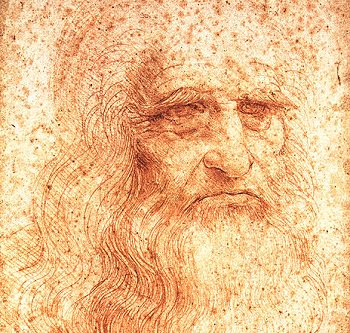
Leonardo da Vinci, the Portrait of a Man in Red Chalk, painted in 1512, when Leonardo da Vinci was 60+ and living in France, in Biblioteca Reale, Turin
21st Century Spiritual Renaissance
Demystifying Magic When Eastern Aum meets Western Amen
If you know anything about true art or mysticism, you will know that both are synonyms for a life-long research and devotion to beauty. There is no way to make a child or a lay man “mentally” appreciate a perfect glass of wine or a tea spoon of perfect honey that is from the best organic lands, since they yet do not have training and patience necessary to comprehend the complexity behind its making. This is why there is no money in true art. It is our Kings, Governments and Churches that have in the past sponsored true art praying their fame will stay with us for eternity.
Following our drive for goodness and consciousness manifestations, we are 100% sure that if we follow the Role Models our lives will flourish
Humanity has developed a strong forceful urge to follow the best in the class: the best of scientists, the best of educators, the best of ancestors, the best of the religious followers, Gurus – an Indian man would tell you. Abusing this noble urge many Kings, read: Churches have offered us (Humanity) a number of lunatics to follow confusing them with “Saints”, so our kids will go into wars while they were able to use “killing” as a hypnosis tool with the best of our youths.
Acting as behavioral models, the role models do influence our goal setting and represent the highest potent posibility within our lives. Within our minds they create an inspirational force that influences us thoughout our journey, increasing our motivational drive.
Manipulating our drive towards goodness, towards the Role Models, now we have our children following Pop Stars, Actors and TV personalities, whose job is presenting oneself in the most likeable of ways. If the most likeable way is rebellion, they shall give you rebellion, if the most likeable way is truthfulness (God bless the likes of John Oliver, whose opinion I deeply respect) they shall give you truthfulness.
If we consciously understand this huge drive to follow Role Models, we will be following the likes of Socrates, Plato, Yogananda, Pythagoras, Rumi, Dante, Giordanno Bruno, Bach, Nikola Tesla, Leonardo da Vinci, Patanjali, Leo Tolstoy, Jung, Sri Aurobindo Lao Tzu and St Teresa but following their lives was at times hugely difficult
Check also Leonardo da Vinci's Leda with Swan Mystical Knowledge
Spiritual Role Models and Leonardo da Vinci
“During the time of Leonardo… we officially as lunatics marched into the Age of Reason. Our Universities flourished, manuscripts that were for centuries exclusively passed from one monk to the other, were finally discovered, and freely or in secret passed amongst the geeks thirsty of knowledge.
In Leonardo. we meet an ideal 'Renaissance man', an all-round genius, a painter, a sculptor, a scientist, an architect, a philosopher and a spiritual teacher with ideas that are far ahead of his time. Leonardo is an inventor with the mind set deep in the future...”
A conversation between Ama and her father Ottavio about Leonardo and Age of Enlightenment, Protagonists of A-Ma or Playing the Glass Bead game with Pythagoras in Sunday Times in an interview - A Beautiful Mind, a historical fiction novel set in the 17th century China
Leonardo was the illegitimate son of a respected lawyer, Messer Piero Frosino di Antonio da Vinci, and he was raised within his household since he was five years old.
At the time of virtually no Universities, his father’s home schooling gave him an amazing training in music, art, biology, Latin and mathematics, and when he was 14 he became an apprentice in the studio of the prominent Florence artist Verrocchio, a dream training opportunity of all the artists of his time. His studies with the best in the Europe’s center of art Florence, lasted seven years giving him a full exposure to drawing, painting and sculpting. Apart from being a scientist, a researcher, Leonardo was also an accomplished musician playing the lyre and the flute.
Leonardo was famous for drawing forward and backward with opposing hands simultaneously, he left many backwards written texts notebooks that could be read only with a mirror. Bill Gates owns the only copy of da Vinci's 72 page manuscript known as the Codex Hammer. The notebook was sold in the mid 1990s for nearly $40 million. The topics within the hand-written manuscript include - the diffusion of light, a study of hydrodynamics, etc.
In art, exploring the portraits of various geniuses whose consciousness manifestations are divine, it is the soul's contact we seek when we look into the eyes of a portrait.
Mystical Art of Leonardo's Monna Lisa
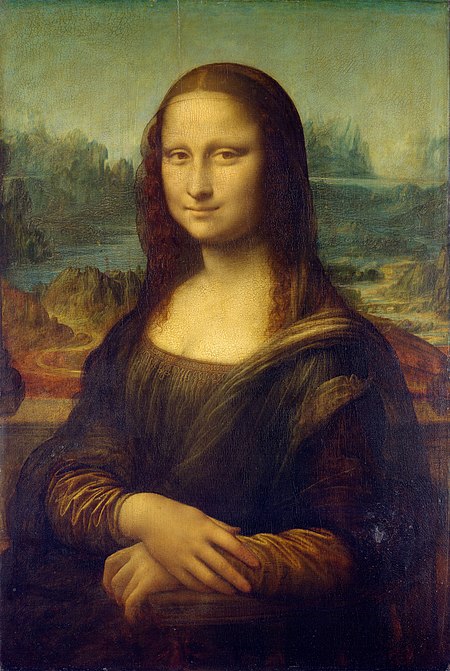
Monna Lisa by Leonardo da Vinci 1517 Louvre Museum Paris
Leonardo was commissioned to do this work in 1503. A contemporary researcher has discovered a note in a 1477 printing of the ancient Roman philosopher Cicero, a note written by Leonardo's contemporary Agostino Vespucci, saying that Leonardo was at that time working on a portrait of Lisa del Giocondo. The Italian name for the painting, was La Gioconda, meaning “the joyfull lady". Although da Vinci began the work on this masterpiece while living in Italy, he did not finish it until he moved to France in 1517 at King Francois I's request. The French king acquired the portrait and displayed the painting in his Fontainebleau palace. The painting is now on permanent display at the Louvre Museum in Paris since 1797.
If your soulhas a deep passion, you will know this statement to be Truth you will be very sensitive about your devotion, as an artist you will never release a painting, as a writer you will forever write your book, as a musician you will never compose believing it is not yet perfect. If your finances (read state support or family wealth) have allowed you to make a research your life-long focus you will be obsessed with beauty, life and Universe, you will observe stars, people, micro and macro Cosmic manifestations, and you will not be infatuated by own-self but find others hugely interesting. Not gossiping but admiration will be the energy that flows through your vanes. Combining this with improving your skills, we now have more than 30 years of life-span (that was the norm in our past) you will joyfully embrace the research in any discipline. So, when the life-forces are against you and you feel physically, mentally or emotionally sick you will use this as a further opportunity to research your body, brain or emotions.
"Art is never finished, only abandoned" Leonardo da Vinci
Mona Lisa was stolen in 1911 with French newspapers reporting the story worldwide. It was returned to the Louvre two years later, with the whole world cheering. Picasso was under suspicion for the theft. Also the officials briefly arrested poet Guillaume Apollinaire, who said that the painting should be burned. In 1956 in two separate attacks, one person threw acid at the painting, and another attacked it with a rock...
Also Check Mystical Christianity Alpha and Omega
check also Mysticism or Magic
At the time of Leonardo, the highest educated souls, who chose the scientific research as their profession, you could count by hand
We often forget that during the Black Death in 1350, the World Population was near to 370 million. In 1600 Venice had a population of almost 200,000 so if 1% of this rich and influential city could read and write, we are talking about 20,000 lucky souls belonging to higher classes only with a capability of reading.
The historians keep reminding us that the global literacy has grown substantially only in the last 200 years.
The ambition of enlightening the population was a reform born from the Age of Enlightenment (after the likes of Bruno and da Vinci). Only 12% could read and write in 1800AC, after the development of the Press, perhaps we had 0.1% around 1600AC when we moved away from Manuscripts hidden within Monasteries?
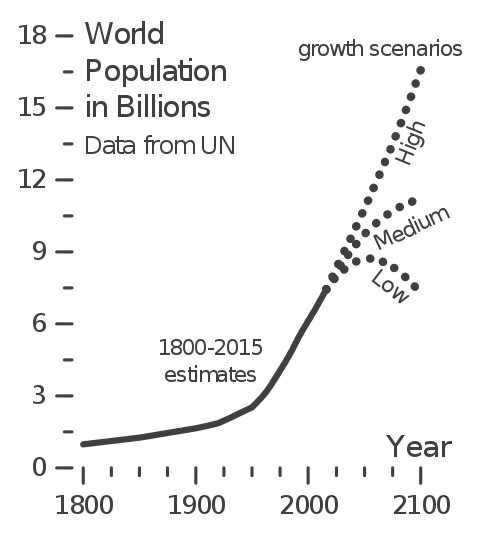
World population according to UN from 1800 to now
If you could read and write, you probably were from a rich self-educated family who can afford home-schooling or you have sent one of your finest boys to a School or a Monastery that offered some sort of education and you paid all of you fortune to do so.
What about the 16th Century Cambridge?
So remember, while the earliest written communication date back to 3,500 BC, attributed to Korea, China, Egypt, Ethiopia, Greece, literacy remained reserved for our Kings, and Priests...
The Cambrdge website tells us of this crazy trend of so called "lay students" to pay and get educated in Cambridge, Uk, when during the 16th century, two small houses needed to be reconstructed into a larger place, now known as Trinity Collage by King Henry VIII...
“The effect of the early academic and religious changes of the century can be seen in the physical appearance of the town: a great new College, Trinity, was founded by Henry VIII from the two small houses of King's Hall and Michaelhouse .. These new foundations were concerned with the education of men for the priesthood in the national church, but they, and Trinity especially, attracted for the first time large numbers of lay students.
These lay students, their servants, and the tailors, fencing-masters, tennis-court-keepers, riding-masters and the like, who came to profit from them, put very great pressure on living accommodation and food-supplies in the town and created serious problems of public order...
The changing character of the student body is reflected in the curriculum. Henry VIII had issued a series of injunctions to the University in 1536 suppressing the Faculty of Canon Law and forbidding the study of scholastic philosophy. The study of canon law declined, and the Greek and Latin classics, mathematics and Biblical studies now came to the fore.”
The 16th Century Cambridge, Cambridge Website
To educate a person and lead it into any profession, within the modern educational systems of Europe, for example, it is compulsory to go to school for at least 11 years until the age of 16 or 18.
We still get all confused when reading the statistics of a number of people who have finished Universities in the World. There is always an underlying question - what do you really mean by a University within such varied systems of education. During the last 100 years, the European countries have more or less all introduced Free Education for all the levels of study within their Primary, Secondary Schools, Colleges and Universities, while the UK and the US kept the education in both Private and Public hands.
Within all of the countries in the "developed worlds", within all the five continents, we now have more or less the same number of compulsory years to educate a child. Within Africa there is no FREE education, so no Public money put into any schooling whatsoever, so all the years we within the "developed worlds" put into schooling just simply do not exist within Africa.
Now, where the "developed world" still gets confused is what has happened to the ex-socialist countries? They saw education as one of the highest priorities within their Governing, so they introduced free Primary, Secondary, and Tertiary Education for all, within all of their countries - now having 60% of graduates coming from the Russian Federation while the US statistics show 43.5% and the UK statistics are in the region of 32.4%!
It is not Finland that confuses us, since we talk about the richest of the countries in the world, but Korea with its 40.3%. These numbers finally do not lie, because we had enough time to analyze them properly breaking down different educational parameters and comparing likes with likes.
This very expensive task of educating our youths is now bringing a strong educated working force to the World.
Our new Graduate students and the UNESCO statistics of 25+ years old population with their degrees, gives us a statistic of the World students who have just finished either University, or have done their Masters or have finalized their Phd. The numbers can finally be compared and they look exactlly like the following table:
Share of population by educational attainment, Population 25 years & older |
|||
September 2018 Release |
|||
|
Institut de statistique de l'UNESCO (ISU) |
|||
|
Country or territory |
Population 25 years and older |
No Reading nor Writing Skills % |
Total Tertiary / University + Masters + Phd % |
|
Andorra |
61 |
3.5 |
32.2 |
|
Argentina |
25,949 |
8.1 |
19.4 |
|
Australia |
16,594 |
0.0 |
40.3 |
|
Austria |
6,372 |
0.0 |
27.4 |
|
Bangladesh |
86,337 |
42.5 |
9.3 |
|
Belarus |
6,676 |
0.9 |
50.2 |
|
Belgium |
8,133 |
4.3 |
32.5 |
|
Bosnia and Herzegovina |
2,860 |
16.3 |
11.1 |
|
Brazil |
125,015 |
22.4 |
13.5 |
|
Bulgaria |
5,421 |
0.0 |
24.6 |
|
Canada |
24,243 |
0.0 |
47.7 |
|
China |
870,905 |
6.6 |
8.8 |
|
Cyprus |
813 |
5.0 |
36.5 |
|
Czechia |
7,930 |
0.2 |
20.2 |
|
Denmark |
4,001 |
0.0 |
34.2 |
|
Estonia |
968 |
0.0 |
37.8 |
|
Ethiopia |
32,047 |
75.4 |
1.1 |
|
Finland |
3,951 |
0.0 |
34.3 |
|
France |
45,236 |
2.4 |
29.4 |
|
Germany |
62,025 |
0.0 |
26.1 |
|
Greece |
8,228 |
8.5 |
21.2 |
|
Hungary |
7,318 |
0.4 |
21.4 |
|
India |
631,611 |
48.5 |
9.9 |
|
Iran (Islamic Republic of) |
49,125 |
0.0 |
23.1 |
|
Ireland |
3,181 |
2.1 |
34.4 |
|
Israel |
4,624 |
4.4 |
47.0 |
|
Italy |
45,867 |
4.7 |
14.4 |
|
Japan |
97,548 |
0.4 |
29.9 |
|
Kenya |
14,738 |
48.2 |
0.0 |
|
Kuwait |
2,758 |
5.7 |
41.7 |
|
Latvia |
1,469 |
0.0 |
31.4 |
|
Lithuania |
2,080 |
0.9 |
33.9 |
|
Luxembourg |
404 |
0.0 |
34.3 |
|
Malta |
306 |
1.1 |
16.8 |
|
Mexico |
70,259 |
19.9 |
15.1 |
|
Montenegro |
415 |
2.5 |
19.5 |
|
Nepal |
11,901 |
59.2 |
4.6 |
|
Netherlands |
12,178 |
1.5 |
31.0 |
|
New Zealand |
3,019 |
0.0 |
31.3 |
|
Niger |
5,683 |
86.1 |
1.7 |
|
Norway |
3,642 |
0.3 |
35.8 |
|
Oman |
2,839 |
16.1 |
21.3 |
|
Pakistan |
87,754 |
50.3 |
8.6 |
|
Palestine |
1,850 |
6.4 |
23.7 |
|
Peru |
17,037 |
19.4 |
20.9 |
|
Poland |
28,529 |
0.8 |
25.0 |
|
Portugal |
7,798 |
8.9 |
19.0 |
|
Republic of Korea |
36,471 |
4.5 |
40.3 |
|
Romania |
14,387 |
1.3 |
14.6 |
|
Russian Federation |
100,531 |
0.6 |
60.1 |
|
Rwanda |
4,442 |
64.7 |
3.2 |
|
Saudi Arabia |
16,373 |
18.7 |
21.0 |
|
Serbia |
6,283 |
2.6 |
20.7 |
|
Singapore |
4,086 |
13.9 |
43.9 |
|
Slovakia |
3,985 |
0.2 |
18.8 |
|
Slovenia |
1,566 |
0.2 |
27.0 |
|
South Africa |
28,016 |
17.3 |
7.7 |
|
Spain |
34,958 |
8.9 |
29.8 |
|
Sweden |
6,960 |
0.0 |
31.6 |
|
Switzerland |
6,199 |
0.3 |
36.5 |
|
Tunisia |
6,987 |
25.8 |
15.2 |
|
Turkey |
46,304 |
18.9 |
16.4 |
|
Uganda |
11,025 |
66.4 |
8.0 |
|
United Kingdom |
44,822 |
0.1 |
32.4 |
|
United States of America |
219,251 |
1.1 |
43.5 |
While doing a brief management efficiency consultancy work in Nairobi for the Barclay’s Bank I had an opportunity to read their local newspapers and personally experience opening of the first Public Primary school in Kenia. The demand for the school was so huge that they were urging parents not to block the entrances of the school, so the teachers could freely pass, and Tanzania kids, not to join this enthusiastic crowd because the school cannot offer the education for Tanzania. Can you picture this? A taxi driver was enlightening me narrating his story, his parents saved money all their life so that they can pay for his education, so he can become a Taxi driver – it did not occur to me that you ought to be able to read and write if you wish to pass a car driving exam! When we get something for Free, as we in Europe have, we have huge difficulties understanding that this is not the norm within our little Planet Earth. Walking through the streets of Nairobi, and shopping from their markets, I felt safer there as a woman on my own travelling, than when I lived in Cambridge, UK, next to a home-less house. When in Ethiopia, spending time in Addis Abeba while living in the Sister Ludgarda’s orphanage, going through the legal procedures of adoption of my kids, I only used local transport and walked through the streets of Addis and was not once endangered even though I was alone and in a very poor neighborhood.
Helping a Maltese Catholic Priest Father George build a school in Africa, I had a chance to learn that a cost of running a single school for a year was insignificant, so my mind stayed puzzled of how come the developed world does nothing to help these developing countries when it is so obvious that it is education that will bring them out of the poverty.
Visiting my local grosser in Malta, who has tried hard to introduce organics and has never ever cheated his customers, I saw him entrusting his business to a Guinean man, from West Africa, born in a town bordering with Senegal. Trying to deeper understand his circumstances, I asked about the number of languages he speaks, and was shocked to learn he is fluent in French, English, Italian and Portuguese. The slave trade came to the coastal region of Guinea with European traders in the 16th century. French is the official language of Guinea, and the main language in schools. France colonized it for it is rich in gold and diamonds, in the 1890s. France negotiated Guinea's boundaries in the late 19th century with the British for Sierra Leone, and the Portuguese for their Guinea colony. Guinea declared its independence from France during 1958. This was his starting point. His drive for goodness must be HUGE.
So, why does this matter today? Art at the very top of educational hierarchy
Within this ever changing Universe, while exploring consciousness manifestations, we get overpowered by a constant bombardment of information, impulses and sensations. Like faceless dolls we walk through a variety of life-events meeting people artificially without ever truly getting to know them. The true reason is our fear that someone will manipulate our drive for goodness that has happen so many times within the Human History.
Having experienced the drive for Goodness within own country, yet always being reminded of "us" and "them", of borders, of -isms, we find it difficult to comprehend that the drive for Goodness is Universal, that the knowledge belongs to all, that our subconscious fears towards strangers and unconscious mis-trust stay deeply within our behaviour patterns and it is used as a type of a psychological manipulation that no conscious human being wishes to explore, live-in and call own Reality.
Our artists with their mystical knowledge break these borders.
Acknowledging that we can start thinking Art only if our educational structure allows us to do so. We can start creating music only if we are given years and years of strenuous training. Research and writing books is far beyond the satisfaction of basic needs. Art, music, creativity are at the very top of the educational hierarchy and it takes years of training in all sort of disciplines for one to become a true artist.
“Music is a moral law. It gives soul to the universe, wings to the mind, flight to the imagination, and charm and gaiety to life and to everything”- Plato
Art at the very top of educational hierarchy Image
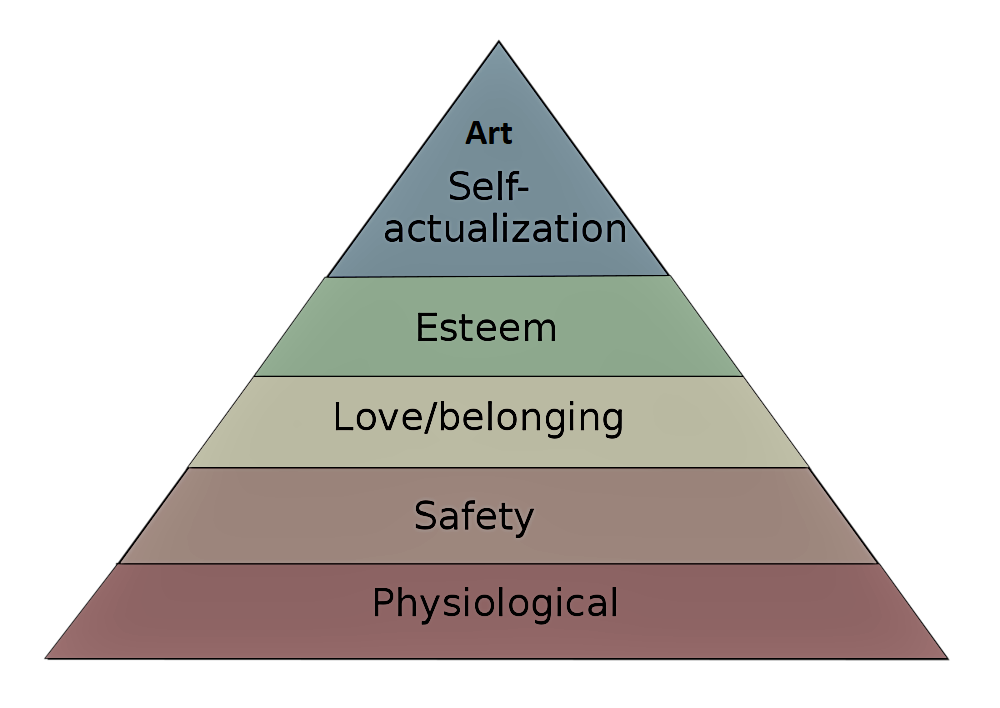
Having experienced the mystical knowledge within the works of Leonardo, we are left with an impression that there is nothing else to be done or said for eternity. However we face a challenge to explore and re-invent art beyond Leonardo or within the literacy world to write after the likes of Tolstoy or to explore consciousness beyond the works of Jung.
Deeply humbled, understanding that there is no comparison with the minds and souls that are in such way connected to enlightenment, we accept that in our imperfection we still drive to fulfill the same prophecy, to portray a soul while portraying a portrait.
Contemporary Art Work and Zvezdan Reljić Wiccna
In such an attempt, I have recently visited a contemporary exhibition named Wiccna (a Maltese for - our faces), a photographic exploration of a Serbian artist Zvezdan Reljić currently on display in an art space Blitz in Valletta.
Zvezdan has photographed 200 individuals creating 200 black and white portraits that are featured within a book “Faces”.
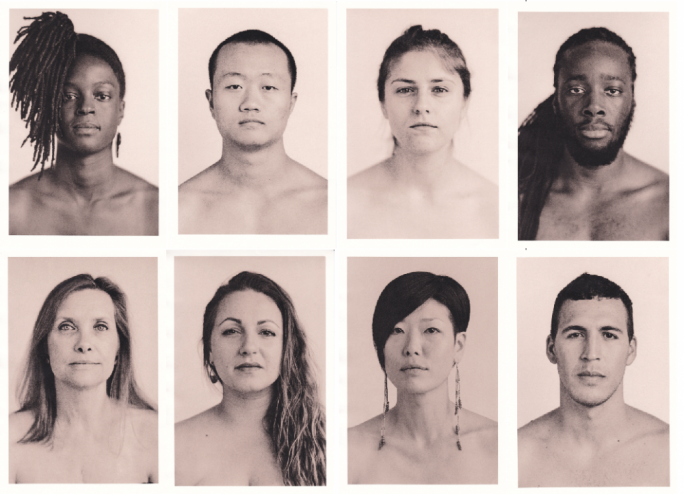
Contemporary Art Work and Meeting Soul-to-Soul, Wiccna photographic exhibition Zvezdan Reljic Malta
Now imagine this, how difficult a task of the true art is, 200 naked faces, with no make-up, no settings, no improvisations, just 200 simple and pure expressions.
This quest could be materialised only if the soul’s expression in front of the camera lenses is awake, talking to the audience, conscious and in a moment of time enlightened with the explorative light of the photographer’s mind.
We awake when someone is interested in us and our story. Going through Zvezdan’s images, I knew he is deeply interested in people and their inner narratives, I knew he believes in goodness within 200 individuals he photographed, catching their highest potential.
The 200 portraits had, believe it or not, a 100 different nationalities and each image narrates a short yet memorable life journey on this melting pot of humans called Malta.





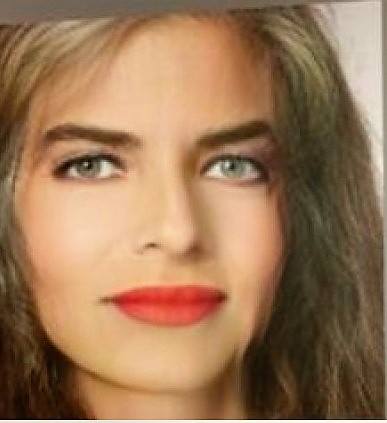
Mysticism within Art Leonardo da Vinci as Role Model No comments on Mysticism within Art Leonardo da Vinci as Role Model: